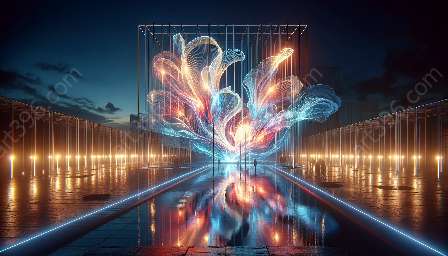Light has been a fundamental element in art and has the power to influence and shape the viewer's perception and sense of identity. In this discussion, we will explore the psychology of light art and its profound impact on how viewers perceive themselves and the world around them.
The Psychology of Light in Art
For centuries, artists have utilized light to convey emotions, create atmosphere, and evoke compelling experiences. The psychology of light in art delves into the cognitive and emotional responses that viewers have when exposed to different qualities of light in artistic compositions.
Light can evoke feelings of warmth, calmness, mystery, or awe, and it can significantly impact the viewer's emotional state. Whether through the use of natural light in landscape paintings or the dramatic interplay of light and shadow in Baroque art, artists have employed light to engage the viewer in a dialogue that extends beyond the visual experience.
Perception and Self-Awareness
When it comes to light art, the interaction of light and space can profoundly impact the viewer's perception and self-awareness. Light art installations, such as those created by renowned artists like James Turrell and Olafur Eliasson, often immerse viewers in environments that challenge their conventional ways of seeing and understanding themselves.
These immersive experiences invite viewers to question their own sense of identity, prompting them to consider how they perceive and interact with the world around them. Through the manipulation of light and space, light art installations can create a contemplative and introspective atmosphere that encourages self-reflection and self-discovery.
The Influence of Light Art on Identity
Light art can play a crucial role in shaping the viewer's sense of identity by offering unique perceptual experiences. The interplay of light, color, and form in light art installations can elicit a sense of wonder and curiosity, prompting viewers to reassess their own perceptions and assumptions.
Moreover, light art often blurs the boundaries between the real and the imagined, challenging viewers to question their understanding of reality and their place within it. This cognitive shift can lead to a reevaluation of one's identity and a heightened awareness of the interconnectedness between oneself and the surrounding environment.
Conclusion
In conclusion, the psychology of light art plays a significant role in influencing the viewer's sense of identity. By leveraging the emotional and cognitive impact of light in art, artists and light art practitioners have the power to create transformative experiences that invite viewers to reassess their perceptions and contemplate their inner worlds. Light art has the capacity to shape the viewer's sense of self and inspire a deeper understanding of identity and consciousness.

